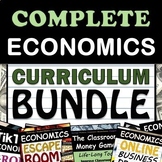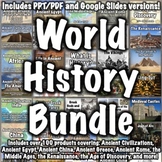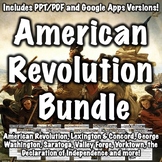63 results
World history Common Core W.7.2 independent work packets
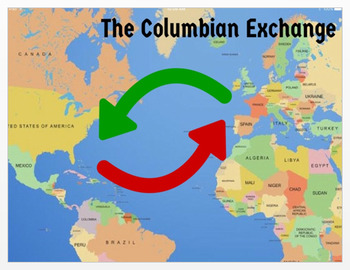
"The Columbian Exchange" - Article, Power Point, Activities, Assessments (DL)
The illustrated Article and Power Point examine the outcome and consequences of the European discovery of the Western Hemisphere - the exchange of goods, people, plants, animals, and ideas. Activities and Common Core-Aligned Document Based Question Assessment included.Lesson includes: - 3-Page Article- 21-Slide Power Point Presentation - Multiple Choice / DBQ Assessment + Answer Key - Primary Source: - from "Letter from Christopher Columbus" - 3 Primary Source Visual Attachments - Common
Grades:
5th - 9th

Medieval Europe in the "Dark Ages" - Article, Power Point, Activities, Assess.
The Article and Power Point briefly describe the changes Europe would go through as a result of the Fall of the Roman Empire. It highlights the lack of order, travel, trade, education, and infrastructure in the Early Middle Ages - a period some refer to as "The Dark Ages." It also includes the fundamentals of feudalism which was established during this period of time and the reason for the coining of the term "Dark Ages" and the reasons why it gives the wrong impression. Great transition from
Grades:
5th - 9th
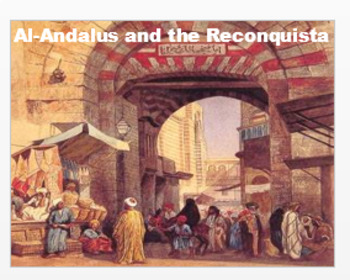
"Al-Andalus & the Reconquista" Article, Power Point, Activities, Assessments DL
The illustrated Article and Power Point explain the conditions of Al-Andalus before and after the Reconquista and Spanish Inquisition. Activities and Document Based Question Assessments included. Lesson includes: - 3-Page Illustrated Article- 27-Slide Power Point Presentation - Document Based Question Assessment + Answer Key- Primary Source: from "The Song of El Cid" - CC Aligned - Document Based Question Short Answer Assessment + Answer Key- DBQ Scoring Rubric (allows students to
Grades:
5th - 9th
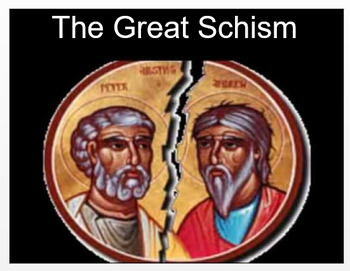
Great Schism - 2 Civilizations Emerge - Article, Power Point, Activities, Assess
The illustrated Article and corresponding Power Point discuss the religious, political, and cultural differences that developed in Europe along the lines of the Great Schism. It explains the reasons for the creation of the Roman Catholic Church and the Eastern Orthodox Church and the influences each had on their respective civilizations. Activities and Assessment included.Lesson includes: - 4-Page Illustrated Article- 31-Slide Power Point Presentation- Multiple Choice / Document Based Question
Grades:
5th - 9th
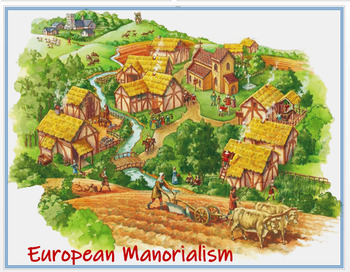
"Medieval European Manorialism" Article, Power Point, Activities, Assessment
The illustrated Article and Power Point explain the organization of life on a medieval manor that lasted for hundreds of years and shaped Europe for hundreds more. Activities and Assessment included.Lesson includes: - 4-Page Illustrated Article- 22-Slide Power Point Presentation - Multiple Choice / Document Based Question Assessment + Answer Key - DBQ Scoring Rubric (allows students to easily score each other's short answers)- "Manorialism Scaffolded Review" + Answer Key- Graph
Grades:
5th - 9th

"Justinian and Theodora" - Article, Power Point, Activities, Assessments (DL)
The illustrated Article and PowerPoint demonstrate Theodora's influence on many of Justinian's decisions and accomplishments during his rule of the Byzantine Empire in the sixth century...Activities and Assessments included.Lesson includes: - 6-Page Illustrated Article - 38-Slide PowerPoint Presentation + Notes- Multiple Choice Assessment + Answer Key - Scaffolded Paragraph Writing Activity + Scoring Rubric - Document-Based Question Assessment + Answer Key- DBQ Scoring Rubric (allows
Grades:
5th - 9th

"The Destruction of Pompeii" - Article, Power Point, Activities, Assessments
"The Destruction of Pompeii" illustrated Article and Power Point tell the story of Pompeii's last days and exposes students to primary and secondary history sources, as well as, asks them to make a decision, in a paragraph, about why or why not some residents chose not to flee the volcanic eruption. Activities, as well as, Multiple Choice and Document Based Question Assessments also included.Lesson includes: - 7-Page Illustrated Article- 65-Slide Power Point Presentation - Multiple Choice /
Grades:
5th - 9th

"Johannes Kepler" - Article, Power Point, Activities, Assessment (DL)
The 4-page Article and 31-slide Power Point reveal the genius of Johannes Kepler. His theory, Three Laws of Planetary Motion is explained, along with the heliocentric model of the universe and his observations of the supernova known as Kepler's Nova. Activities and Assessment included.Lesson includes:- 4-Page Illustrated Biography- 31-Slide Power Point Presentation- Multiple Choice / Document Based Question - Assessment + Answer Key- DBQ Scoring Rubric (allows students to easily score each o
Grades:
5th - 9th
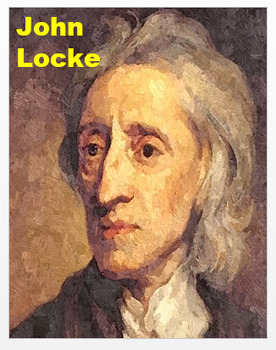
"John Locke" - Article, Power Point, Activities, Assessments (DL)
Both the Article and Power Point present a brief biography of John Locke, the Enlightenment writer recognized as having the most influence on the intellectual and physical revolutions of the latter half of the 18th century. Activities and Document-Based Question Assessments included.Lesson includes: - 3-Page Illustrated Biography - 23-Slide Power Point Presentation - Multiple Choice / DBQ Assessment + Answer Key- Primary Source: from "Two Treatises of Government"- Common Core-Aligned, DBQ-S
Grades:
5th - 9th
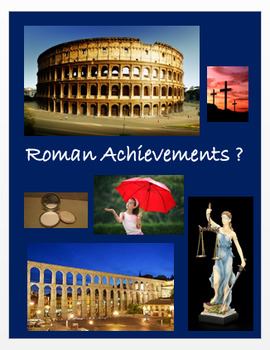
Roman Achievements? - Article, Power Point, Activities, Assessment (DL)
The illustrated Article and Power Point feature the innovations that we are fairly certain belong to the ancient Romans. They point out that the Romans make it difficult to be certain though, because they took credit for almost everything ever invented - examples included. Activities, and Assessment included.Lesson includes: - 5-Page Illustrated Article- 50-Slide Power Point Presentation + Notes- Multiple Choice / Document Based Question Assessment + Answer Key - DBQ Scoring Rubric (allows stu
Grades:
5th - 9th

"The Enlightenment and its Impact" -Article, Power Point, Activities, Assessment
The 7-page illustrated Article and 63-slide Power Point feature the Age of the Enlightenment and its influence on world events. It includes details of the most important Enlightenment concepts and the most influential writers and how they affected Europe, as well as, the newly formed United States of America. Activities and Common Core-Aligned Document Based Question Assessments included.Lesson includes: - 7-Page Illustrated Article- 63-Slide Power Point Presentation - Multiple Choice / Do
Grades:
5th - 9th

"Cartography - Age of Exploration" - Article, Power Point, Activities, Assess
The 2-page illustrated Article and 17-slide Power Point define and explain early map-making, the people involved, and the development of the "New World" reality. Activity and Assessment included.Lesson includes: - 2-Page "Cartography" Article - 17-Slide Power Point Presentation - Multiple Choice / Document-Based Question Assessment + Answer Key - DBQ Scoring Rubric (allows students to easily grade each other's short answers) - Mapping Activity- "Cartography Crossword" + Crossword Key- "
Grades:
5th - 9th
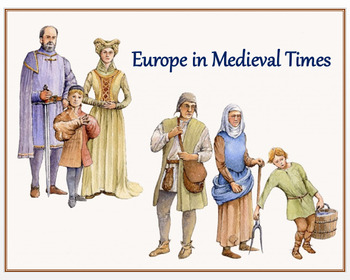
Medieval Europe - "The Feudal Way" - Article, Power Point, Activities, Assess
This brief Article and Power Point explain the roles of the the three main groups of people in feudal Europe: nobility, clergy, commoners - the connection of the Vikings to the creation of feudalism - as well as, how feudalism was constructed and how it worked. Activities and Assessment included.Lesson includes: - 4-Page Illustrated Article - 30-Slide Power Point Presentation - Document Based Questions Assessment + Answer Key - Multiple Choice Assessment + Answer Key- Primary Source:
Grades:
5th - 9th
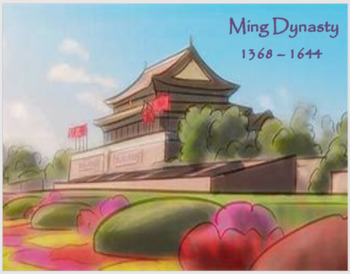
"The Ming Dynasty" - An Overview - Article, Power Point, Activities, Assessments
The Article and Power Point explain the Ming Dynasty under Hongwu and Yongle, the foreign policy pursued by the Ming - including Zheng He, the Tributary System, and its results, as well as, the influence that medieval China had on the rest of the world before pursuing a "closed door" policy and withdrawing from international trade. Activities and Document Based Question Assessments included.Lesson includes: - 4-Page Illustrated Article- 31-Slide Power Point Presentation - Multiple Choice / DBQ
Grades:
5th - 9th
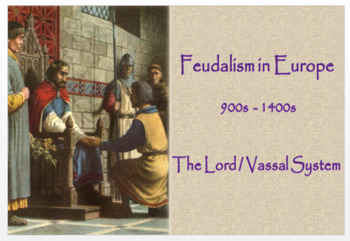
"Feudal Europe" - Article, Power Point, Activities, Assessments (DL)
The illustrated Article and Power Point describe the workings of the feudal system in Europe as a lord / vassal system - a system in which loyalty and service are given in exchange for land and other rewards. Activities and Document Based Question Assessments included.Lesson includes: - Brief 3-Page Illustrated Article- 25-Slide Power Point Presentation - Multiple Choice / Document-Based Question - Assessment + Answer Key- Primary Source: excerpts from "The Annals of St. Bertin"- Common
Grades:
5th - 9th
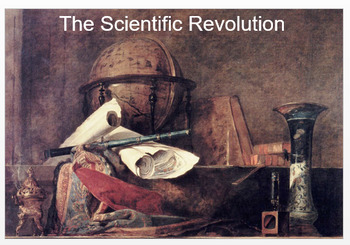
The Scientific Revolution + Notables - Article, Power Point, Activities, Assess
The illustrated Article and Power Point contain an introduction to the Scientific Revolution. It then goes on to explain the achievements of the leading figures involved in the rise of modern science - Copernicus, Kepler, Galileo, Newton, Bacon, and Descartes. It is followed by an explanation of the legacy of the Scientific Revolution. Activities and Assessment included.Lesson includes: - 6-Page Illustrated Article - 55-Slide Power Point- Multiple Choice / Document Based Question - Assessment
Grades:
5th - 9th
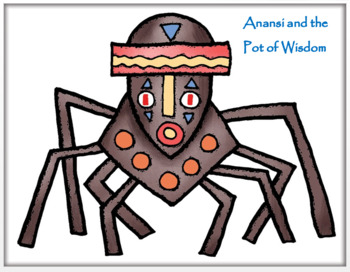
Medieval W. Africa - "Anansi & the Pot of Wisdom" - Article, Power Point, Assess
The Primary Source and Power Point tell the engaging story of how the world got its wisdom. The story is an example of the tales told to children by African griots to teach morality. Anansi the Spider, as well as, other non-humans were commonly used in West African morality tales. Activities and Assessment included.Lesson includes:- 2-Page Illustrated Article- 17-Slide Power Point Presentation- C.C. Aligned Document Based Question Assessment + Answer Key- Document Based Prompt:"Explain how the
Grades:
5th - 9th
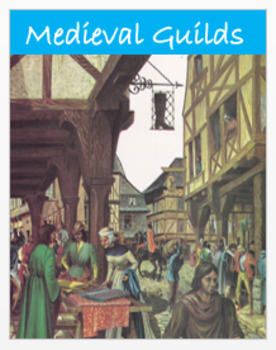
"Medieval Guilds" - Article, PowerPoint, Activities, Assessment
The brief, illustrated Article and Power Point explain the development of Medieval Guilds ... what they were ... why they were developed ... who worked in them ... and who benefited from them. Multiple Activities and Assessment included.Lesson includes: - 3-Page Illustrated Article - 36-Slide Power Point Presentation- Multiple Choice / Document Based Question Assessment + Answer Key - DBQ Scoring Rubric (allows students to easily score each other's short answers)- "Guild Crossword" + Crosswo
Grades:
5th - 9th
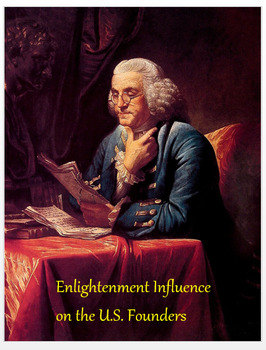
Enlightenment Influence on U.S. Founders - Brief Bios, Power Point, Assessment
"Enlightenment Influence..." presents students with the philosophies of four European Enlightenment figures who greatly influenced the Declaration of Independence, the Constitution, and the Bill of Rights - John Locke, John Jacques Rousseau, Baron de Montesquieu, and Rene Descartes. After reading the bios, the students are asked to match lines from the Declaration with the figure who influenced them. In addition, they are to match the figure who most influenced the Constitution. Finally, they
Grades:
5th - 9th
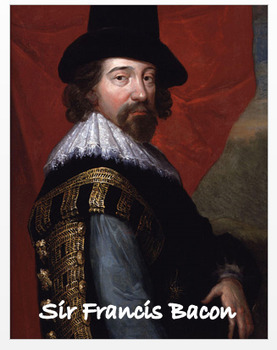
"Francis Bacon" -Article, Power Point, Activities, Assessment -Distance Learning
An illustrated 3-page Article and 18-slide Power Point of Francis Bacon: Novum Organum Scientiarum, Baconian Method vs. Aristotelian Natural Philosophy; Inductive Reasoning, The Scientific Method. Activities and Assessment included.Lesson includes:- 3-Page Illustrated Biography- 18-Slide Power Point Presentation- Multiple Choice / Document Based Question Assessment + Answer Key- DBQ Scoring Rubric (allows students to easily score each other's short answers)- Francis Bacon Crossword + Cros
Grades:
5th - 9th
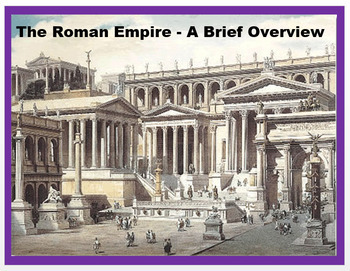
"The Roman Empire" - A Brief Overview - Article, PowerPoint, Activities, Assess.
The illustrated Article and Power Point give the reasons for the end of the Roman Republic, continuing on to the reasons for the end of the Western Roman Empire, including the major accomplishments in between, as well as, the legacy of Rome. Activities and Assessment included. Makes a great intro lesson.Lesson includes: - 3-Page Illustrated Article - 37-Slide Power Point Presentation + Roman Empire Notes- Multiple Choice / Document Based Question - Assessments + Answer Keys - DBQ Scoring Rubr
Grades:
5th - 9th
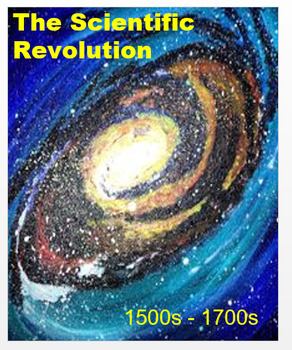
"Scientific Revolution - An Overview" Article, Power Point, Activities, Assess
"The Scientific Revolution" Article and Power Point examine the origins, the growth, the people, the accomplishments, and the effects of the emergence of modern science. Activities, Primary Source, and Document Based Question Assessments included. Featured: Copernicus, Kepler, Galileo, Newton. Bacon, Descartes. Lesson includes: - 4-Page Illustrated Article- 45-Slide Power Point Presentation - Multiple Choice / DBQ Short Answer Assessment + Answer Key- Primary Source: - from Rene Descartes'
Grades:
5th - 9th

Yuan China - "Mongols Conquer China" - Article, Power Point, Activities, Assess.
The Article and Power Point briefly explain the origin of the force, led by Genghis Khan, that breached the Great Wall and conquered China in the late 13th century. It shows the achievements of the Mongols up to and including the Yuan Dynasty. It includes the visit by Marco Polo and his involvement with Yuan China and its ruler, Kublai Khan. Activities and Document-Based Question Assessments included.Lesson includes:- 4-Page Illustrated Article- 25-Slide Power Point Presentation - Multiple Ch
Grades:
5th - 9th
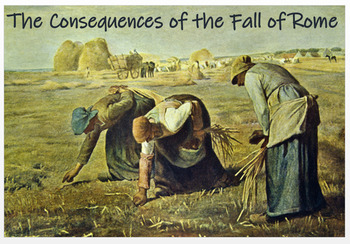
The Roman Empire - Consequences of the Fall - Article, Power Point, Activities
The illustrated Article and Power Point explain the consequences of the Fall of The Western Roman Empire on Europe in the centuries to follow. Featured: the breakdown of centralized government, safety, stability, communication, trade, infrastructure, and innovation. Activities and Assessment included.Lesson includes: - 3-Page Illustrated Article- 26-Slide Power Point Presentation - Multiple Choice / Document Based Question - Assessment + Answer Key - DBQ Scoring Rubric (allows students to
Grades:
5th - 9th
Showing 1-24 of 63 results

